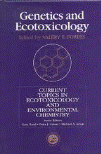Papers in the Biological Sciences

Valery Forbes Publications
Document Type
Article
Date of this Version
2006
Citation
Aquatic Toxicology (2006) 77: 105-115. DOI: 10.1016/j.aquatox.2005.11.003.
Abstract
This study aimed to investigate functional responses of natural marine planktonic communities to stress from the antifouling compound zinc pyrithione (ZPT). Isotope labelling techniques (14C) were applied to study bacterial incorporation of leucine, photosynthetic activity of phytoplankton and grazing of labelled prey by zooplankton communities for 6 days after exposures to nominal concentrations of 0, 5, 25, 50 nM ZPT in a mesocosm experiment in Isefjord, Denmark.
Significant direct effects were visible on chlorophyll α concentrations, which decreased in all exposed communities, to between 48 and 36% of control concentrations on Day 3, 1 day after the last exposure. Phytoplankton activities were also significantly affected on Day 3 with activities between 9 and 26% of control levels, as was zooplankton activities in the 25 and 50 nM exposures. In the 50 nM exposure the total community zooplankton activity was reduced to 25 ± 4%, and per individual to 46 ± 11% of control levels. Bacterial communities showed positive indirect effects with high activities (up to 183 ± 40%) due to higher amounts of available substrate from algal death. Pollution induced community tolerance analyses performed on phytoplankton and bacterial communities at the end of the experiment indicated a development of increased tolerance for phytoplankton in the 50 nM exposed communities, whereas there were no changes in tolerance in the bacterial communities. Multivariate analysis of the integrated functional response by the plankton communities revealed a significant difference (p < 0.05) between exposed communities compared to controls in the first 3 days after last exposure and in the end of the experiment. The study provides evidence of diverse effects on the functions of marine plankton communities under stress from a pollutant. Direct effects lead to cascading indirect effects throughout the community, eventually causing different developments. Continuous exposure to ZPT could lead to severe long-term effects, causing more permanent changes in structure and function than observed here. The study demonstrates that it is possible to assess the functional effects of a stressor in a complex mesocosm system, and to determine effects in a complex plankton community, which were not predictable from laboratory studies.


Comments
Copyright 2006, Elsevier. Used by permission.